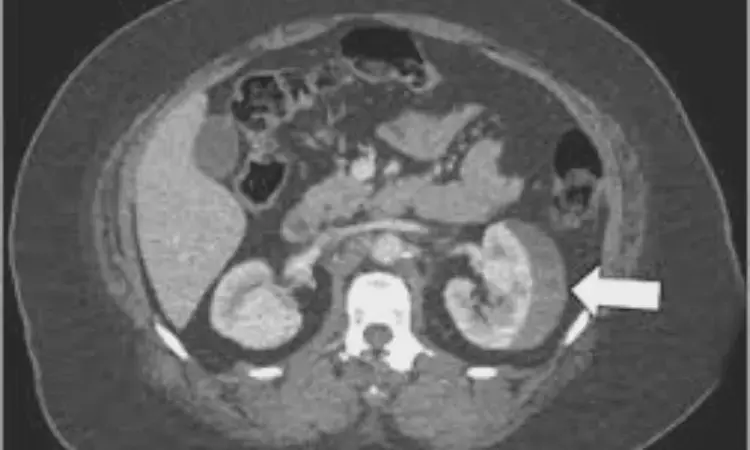- Home
- Medical news & Guidelines
- Anesthesiology
- Cardiology and CTVS
- Critical Care
- Dentistry
- Dermatology
- Diabetes and Endocrinology
- ENT
- Gastroenterology
- Medicine
- Nephrology
- Neurology
- Obstretics-Gynaecology
- Oncology
- Ophthalmology
- Orthopaedics
- Pediatrics-Neonatology
- Psychiatry
- Pulmonology
- Radiology
- Surgery
- Urology
- Laboratory Medicine
- Diet
- Nursing
- Paramedical
- Physiotherapy
- Health news
- Fact Check
- Bone Health Fact Check
- Brain Health Fact Check
- Cancer Related Fact Check
- Child Care Fact Check
- Dental and oral health fact check
- Diabetes and metabolic health fact check
- Diet and Nutrition Fact Check
- Eye and ENT Care Fact Check
- Fitness fact check
- Gut health fact check
- Heart health fact check
- Kidney health fact check
- Medical education fact check
- Men's health fact check
- Respiratory fact check
- Skin and hair care fact check
- Vaccine and Immunization fact check
- Women's health fact check
- AYUSH
- State News
- Andaman and Nicobar Islands
- Andhra Pradesh
- Arunachal Pradesh
- Assam
- Bihar
- Chandigarh
- Chattisgarh
- Dadra and Nagar Haveli
- Daman and Diu
- Delhi
- Goa
- Gujarat
- Haryana
- Himachal Pradesh
- Jammu & Kashmir
- Jharkhand
- Karnataka
- Kerala
- Ladakh
- Lakshadweep
- Madhya Pradesh
- Maharashtra
- Manipur
- Meghalaya
- Mizoram
- Nagaland
- Odisha
- Puducherry
- Punjab
- Rajasthan
- Sikkim
- Tamil Nadu
- Telangana
- Tripura
- Uttar Pradesh
- Uttrakhand
- West Bengal
- Medical Education
- Industry
Repeat CT imaging can be safely omitted in uncomplicated blunt renal injuries: Study

Austria: For patients with low- and high-grade blunt renal injury, routine CT imaging 48 h after trauma can be safely excluded as long as they remain clinically stable, a recent study in the World Journal of Emergency Surgery has found.
The researchers of the study further suggest that patients with high-grade renal injury carry the highest risk for clinical progress and thus, close monitoring should be considered especially in this group.
Currently, repeat computed tomography (CT) imaging is recommended in high-grade blunt renal injury within 48–96 h, yet there is no conclusive evidence on its diagnostic value and clinical significance. Renate Pichler, Department of Urology, Medical University of Innsbruck, Innsbruck, Austria, and colleagues, therefore, aimed to determine the possible gain of CT re-imaging in uncomplicated patients with blunt renal trauma at 48 h after injury, presenting one of the largest case series.
For this purpose, the researchers analyzed a retrospective database of patients with isolated blunt renal trauma due to sporting injuries for a period of 20 years (2000–2020). Only those patients who underwent repeat imaging at 48 h after trauma irrespective of AAST renal injury grading (grade 1–5) and initial management were included. The primary outcome was intervention rates after CT imaging at 48 h in uncomplicated patients versus CT scan at the time of clinical symptoms.
Based on the study, the researchers found the following:
· A total of 280 patients (mean age: 37.8 years; 244 (87.1%) male) with repeat CT after 48 h were included. 53.6% patients were classified as low-grade (grade 1–3) and 46.4% as high-grade (grade 4–5) trauma.
· Immediate intervention at trauma was necessary for 21.1% of patients with high-grade injuries: minimally invasive therapy in 81.4% and open surgery in 18.6% of patients, respectively.
· In only 5.7% of cases, the intervention was performed based on CT re-imaging at 48 h (low-grade vs. high-grade: 3.3% vs. 8.5%).
· On the contrary, the intervention rate due to clinical symptoms was 12.5% (n = 35).
· Onset of clinical progress was on average 5.3 days post-trauma.
· High-grade trauma (odds ratio [OR]grade 4 vs. grade 3, 14.62; grade 5 vs. grade 3, 22.88) and intervention performed on the day of trauma (OR 3.22) were powerful predictors of the occurrence of clinical progress.
The researchers concluded, "current recommended repeat CT imaging does not predict clinically necessary interventions and can be omitted in both low- and high-grade patients without clinical symptoms indicative of worsening conditions."
Reference:
Lindner, A.K., Luger, A.K., Fritz, J. et al. Do we need repeated CT imaging in uncomplicated blunt renal injuries? Experiences of a high-volume urological trauma centre. World J Emerg Surg 17, 38 (2022). https://doi.org/10.1186/s13017-022-00445-9
Dr Kamal Kant Kohli-MBBS, DTCD- a chest specialist with more than 30 years of practice and a flair for writing clinical articles, Dr Kamal Kant Kohli joined Medical Dialogues as a Chief Editor of Medical News. Besides writing articles, as an editor, he proofreads and verifies all the medical content published on Medical Dialogues including those coming from journals, studies,medical conferences,guidelines etc. Email: drkohli@medicaldialogues.in. Contact no. 011-43720751


